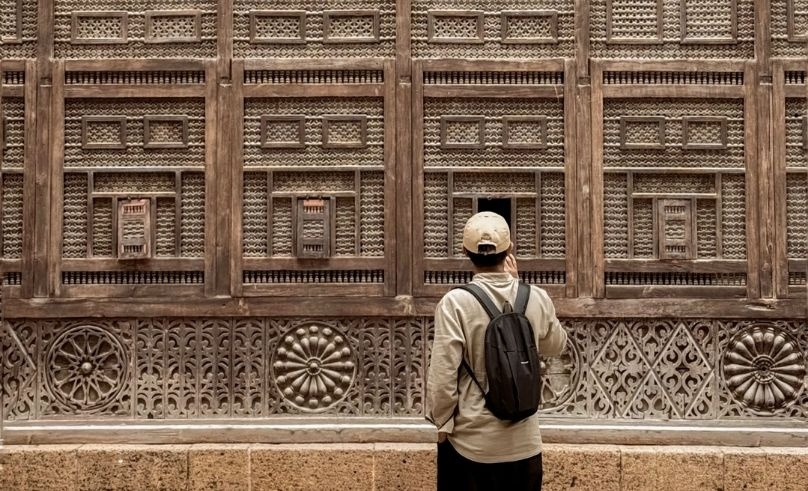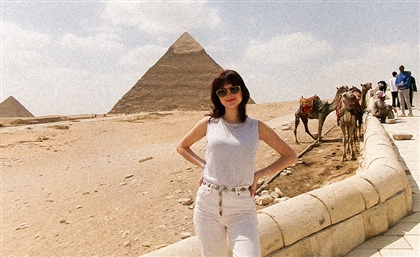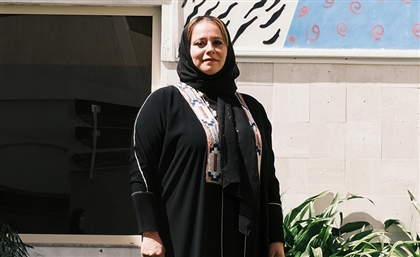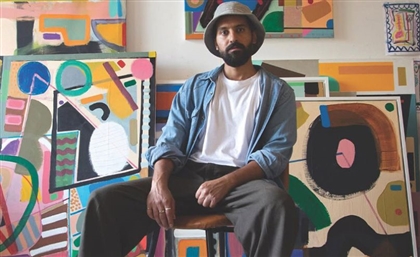Dancing Patterns: The Photographer Animating the Soul of Islamic Cairo
Through mesmerising animations, Dzikri Muzbarizal transforms Cairo’s Islamic ornamentation into moving art. Revealing the rhythm, beauty, and spirit hidden within centuries-old geometry.

Originally Published on July 24, 2025
Amidst the layered mosques, shadowed alleys, and centuries-old façades of Cairo, a quiet kind of motion ripples through the city. Through the eyes of 26-year-old Indonesian photographer and student Dzikri Muzbarizal, Cairo’s intricate Islamic patterns are dancing.-98db71f4-c4ec-4757-9a4e-db567f9c234a.jpg)
Currently studying at Al-Azhar University, Dzikri came to Cairo with a deep-rooted admiration for Islamic architecture. But it was Cairo’s dense, historic and spiritually charged version of it that sparked a creative journey. “Coming from Indonesia, I was captivated by how deeply rooted Islamic art and ornamentation are in the everyday cityscape here. Photography naturally became my way of preserving and connecting with that beauty,” Dzikri tells SceneHome.
-33bc5b39-5242-4d60-ac7c-2c288a6870f5.jpg)
But Dzikri’s work doesn’t stop at documentation. Inspired by the growing popularity of moving media, he saw an opportunity to merge his passion for visual storytelling with the intricate stillness of Islamic ornamentation by adding movement into their static symmetry and layered complexity.
-0e54a90e-2355-4db5-8fb9-eaf9e7492e18.jpg)
The result is (Dancing Patterns), a series of short animations that bring Islamic geometry to life using nothing more than his iPhone and simple animation tools. “I called it ‘Dancing Patterns’ as a kind of personification, breathing life into something still, letting the static beauty of these centuries-old patterns speak in a new way,” Dzikri says.
-4ae213a7-1586-4e0f-aff0-08e759a6c43c.jpg)
Each piece begins with a photograph taken in vertical format with social media storytelling in mind. From there an almost meditative process begins: isolating elements of the pattern, imagining their potential movements, and animating them. “I follow the rhythm within the pattern, observing which parts feel like they want to move," Dzikri explains. "I highlight elements that carry flow or balance, then animate them gently to reveal the energy already hidden in the design."
The results are mesmerising. A rosette begins to bloom, a muqarnas unfolds in shifting tiers, a frieze rotates with quiet precision. Through this lens, Cairo’s historic ornamentation becomes experiential.
-6802f7a7-92ea-43f1-8dc5-492599b107a4.jpg)
It was Cairo’s Mamluk architecture that first transformed the way Dzikri saw Islamic geometry. “Their complexity, harmony, and craftsmanship opened my eyes to how deep and expressive geometry can be," Dzikri says. "More than decoration, it becomes a form of visual poetry."
His goal is to make Islamic art accessible. “More than anything, I want my work to be meaningful to everyone, regardless of their cultural or religious background, because beauty and history belong to us all."
-382d1386-3bae-4250-a4d9-62a74b403fca.jpg)
In that sense, Dancing Patterns becomes a form of digital heritage preservation, storytelling without words, and a poetic revival of Cairo’s soul.
- Previous Article Amr Diab & TLT Concepts Launch Resort on Egypt's North Coast
- Next Article Brown Matcha? Nana's Hojitcha is Our New Summer Obsession
Trending This Week
-
Dec 27, 2025


























